Excerpts from Jim Conrad's
Naturalist Newsletter
from the November 12, 2017 Newsletter, with notes taken in mid October near Tepotzlán, Morelos state, MÉXICO
Elevation about 5315 ft (1620m), at 18°59′07″N 99°05′59″W
MEXICAN CREEPING ZINNIA
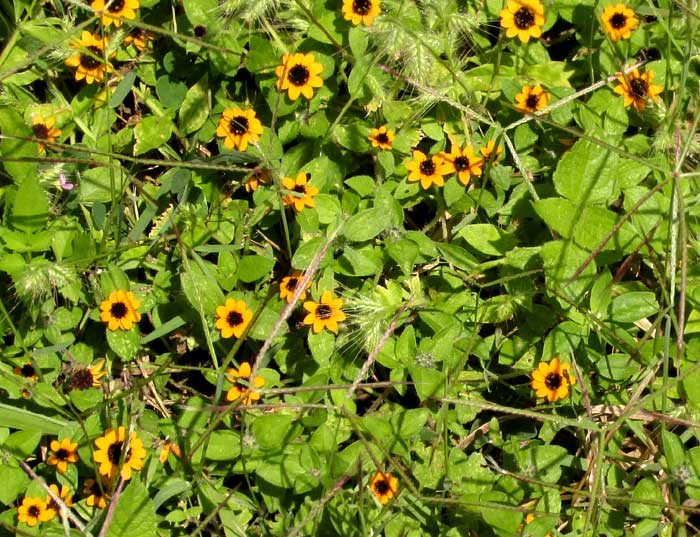
During my mid-October visit with a gardening friend near Tepotzlán, Morelos, in the uplands just south of Mexico City, one of the most eye-catching plants wasn't one of the treasured ornamental plantings, but rather a small, mat-forming, daisy-like herb growing weedily in the mowed lawn and along the road. Above you can see the pretty effect offered by the blossoms in early morning sunlight when the leaves were still dewy.
Below, two flowering heads are showed up close with my fingers in the background for scale:
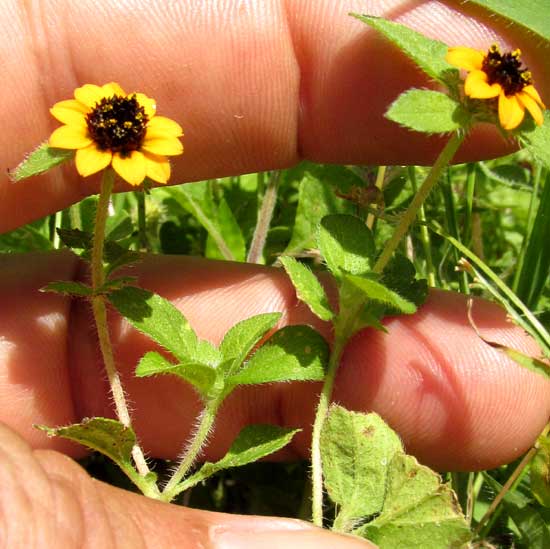
Since the heads' blackish centers are composed of many tiny, cylindrical, crammed-together "disc flowers," and the orangish-yellow, petal-like structures are "ray flowers," we know that this is a member of the enormous Aster or Composite Family, the Asteraceae. That family embraces so many genera and species that usually it's a challenge to identify them to species level, so from the beginning we know to "do the botany." First, take a look below at the leathery, scale-like "involucre bracts" forming a kind of bowl from which the disc and ray flowers arise:
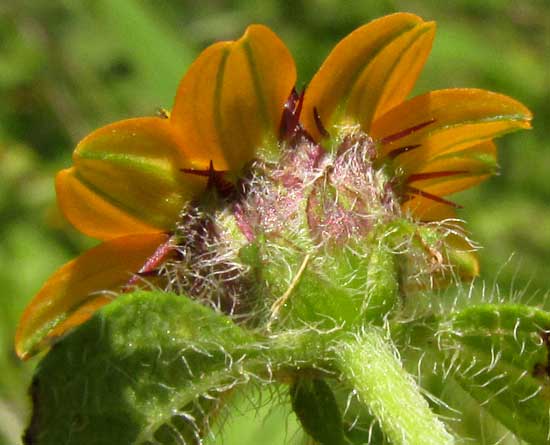
These involucre bracts are reminiscent of those of zinnia flowers, which also belong to the Composite Family. When identifying composites, it's wise to break apart a head to see how the disc flowers are arranged and, below, that's what has been done:
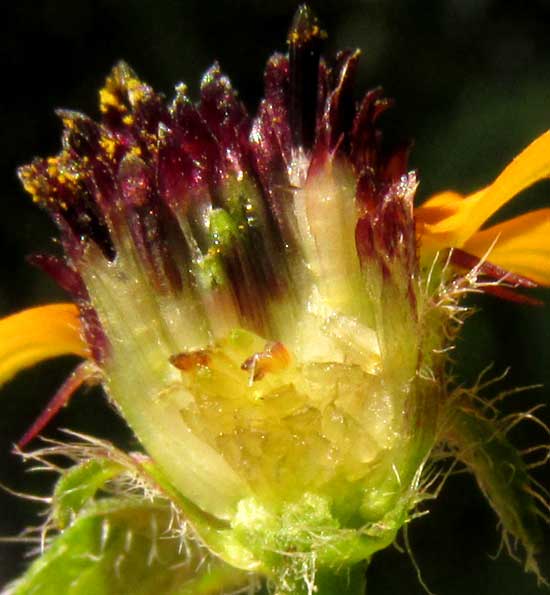
Important field marks to be noted there include the fact that each purple-topped disc flower is partly surrounded at its base by a scale, or bract. Also, the tops of each pale, achene-type fruit consists of a "pappus" of one or two teeth or sharp awns, instead of slender, white hairs such as those atop dandelion fruits, or some other configuration. Removing a ray flower from the head, we find the pappus atop the greenish fruit to consist of larger, purple awns, as shown below:
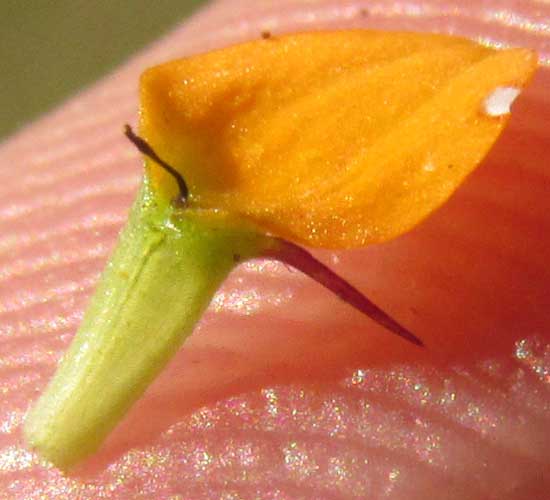
In that picture only one awn is seen. The slender, dark brown, curving item pointed at the picture's top, left corner is the dried-out style.
So, this attractive little plant in English often is known as the Mexican Creeping Zinnia. It doesn't belong to the genus Zinnia, but on the Composite Family's phylogenetic tree it occupys a very nearby branch, which explains those zinnia-like involucre bracts. Mexican Creeping Zinnia is SANVITALIA PROCUMBENS, native from Mexico south to Costa Rica. In the US sometimes it shows up as a weed but apparently it doesn't establish permanent populations. In Spanish it's acquired numerous evocative names such as Ojo de Gallo (Rooster Eye), Ojo de Loro (Parrot Eye), Hierba de Pollo (Chicken Herb), Hierba el Sapo (Toad Herb), and more.
In Mexico Mexican Creeping Zinnia traditionally has been considered a medicinal herb -- making "teas" by putting it in boiling water -- for dealing with stomach problems such as diarrhea, dysentery, indigestion, stomach ache, and vomiting. Other reported uses include for painful urination, inflamed gums, inflamed testicles, nervousness, and the "evil eye." Despite all these uses, to date no clinical tests have confirmed the plant's efficacy.